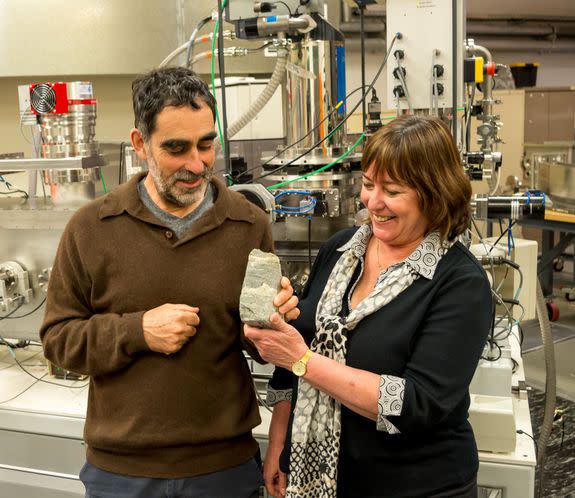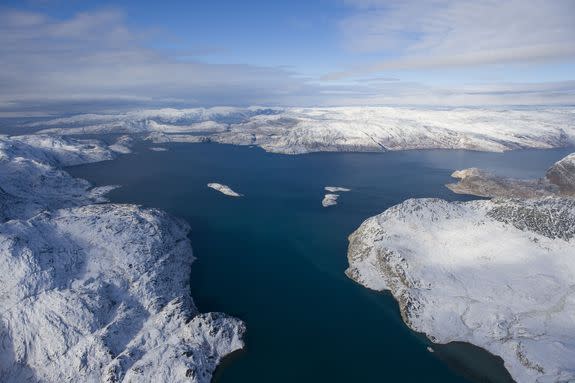Greenland fossils may be the earliest evidence of life on Earth

Newly discovered fossils in Greenland suggest that life may have existed on Earth some 3.7 billion years ago, a team of Australian scientists said. If the findings are confirmed, they would be the oldest evidence on life yet discovered.
The tiny microbial formations found in Isua, southwest Greenland, are around 220 million years older than the current earliest fossil evidence for life, according to a study published Wednesday in the journal Nature.
"This potentially pushes back our understanding of the antiquity of life on Earth, which is really quite astounding," Abigail Allwood, a research scientist and astrobiologist at NASA's Jet Propulsion Laboratory in California, told Mashable.
SEE ALSO: Lucy, our early human ancestor, may have died after falling from a tree
Allwood, who did not participate in the Greenland study, wrote her doctoral thesis on the 3.5 billion-year-old fossils in western Australia that were, until today, considered the world's oldest.
She also authored an outside analysis to run with the Nature study that said the Greenland discovery contained "fairly credible hallmarks" of living microbes.

Image: Yuri Amelin/Australian National university
"If these really are the figurative tombstones of our earliest ancestors, the implications are staggering," Allwood wrote in the article.
"Earth's surface 3.7 billion years ago was a tumultuous place, bombarded by asteroids and still in its formative stages."
The fossils, preserved in metamorphic rocks for millennia, were exposed by the recent melting of a permanent snow patch. Greenland's ice sheet is experiencing record levels of melting due human-caused global warming, which is actually helping scientists search for clues of Earth's origins at the same time that it threatens to trigger catastrophic levels of sea level rise.
The Isua supercrustal belt in southwest Greenland, in the vicinity of Nuuk, Greenland's capital, is considered the oldest surviving piece of the Earth's surface.
Allen Nutman, who leads the University of Wollongong's School of Earth and Environmental Sciences in Australia, discovered the 1- to 4-centimeter-high fossil "stromatolites" along with colleagues. Stromatolites are the sedimentary formations created by microorganisms growing in layers.
The formations are thought to have been deposited in a shallow marine environment, which Allwood described as a "little oasis" on a barely habitable planet made up of heavily deformed and constantly shifting rocks.

Image: Patrick ROBERT/Corbis via Getty Images
At the time the Isua rocks were forming, she said, the surface of Earth resembled that of Mars.
“Mars did not look too different from Earth from a habitability perspective, with standing bodies of water at the surface,” she said in the article.
The ancient fossils exhibit a few key signs that microbes were tinkering with the sedimentary environment, and therefore living.
Their conical shape and finely layered internal texture suggests the structures were not simply folded by geological forces but through microbial activity. Other details of their chemistry and minerals in the surrounding rocks also point to living organisms.
Still, the evidence for life in the Greenland formations is not nearly as solid as that found in the Australian fossils, which were well preserved in sedimentary rocks and showed clearly developed structures and chemical clues, Allwood said.
"It supports the idea that these [Greenland fossils] are biological, but it doesn't prove it," she said by phone.
"There's still room for doubt."

Image: Allen Nutman/nature
Some of the formations might not come from once-living organisms at all, but from "abiogenic mineral accumulations" formed by inorganic, nonliving materials, Nutman and his colleagues wrote in the study.
Allwood said the Nature study is likely just the first round of scientific investigations about the Greenland structures.
"As with the Australian formations and other fossils of that age, there was decades of back and forth about whether or not they're biological," she told Mashable.
"I think that may be true for this as well."
